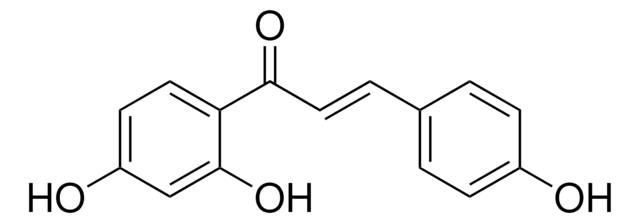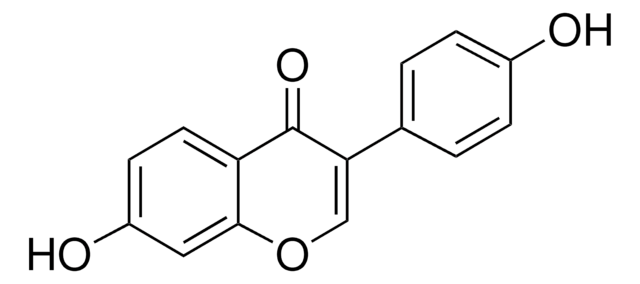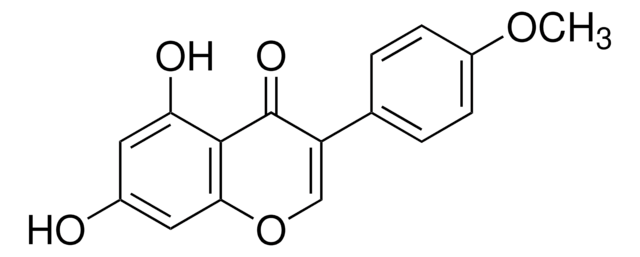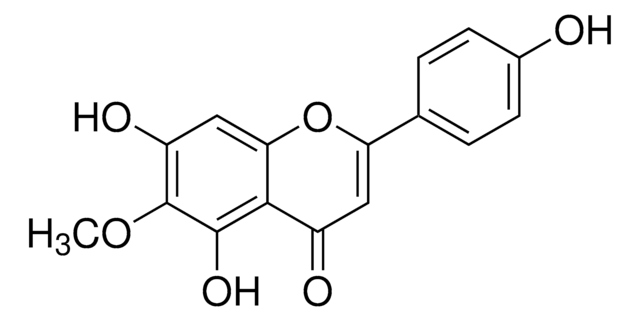78825
Liquiritigenin
≥97.0% (HPLC)
Synonym(s):
7,4′-Dihydroxyflavanone, 7-Hydroxy-2-(4-hydroxyphenyl)-2,3-dihydro-4H-1-benzopyran-4-one
About This Item
Recommended Products
Quality Level
Assay
≥97.0% (HPLC)
form
powder or crystals
impurities
≤7% water
application(s)
metabolomics
vitamins, nutraceuticals, and natural products
SMILES string
Oc1ccc(cc1)[C@@H]2CC(=O)c3ccc(O)cc3O2
InChI
1S/C15H12O4/c16-10-3-1-9(2-4-10)14-8-13(18)12-6-5-11(17)7-15(12)19-14/h1-7,14,16-17H,8H2/t14-/m0/s1
InChI key
FURUXTVZLHCCNA-AWEZNQCLSA-N
General description
Application
- to study its inhibitory effect on tumor metastasis in the treatment of colorectal cancer[2]
- as a reference standard for ultra-performance liquid chromatography (UPLC) of Chaihu-Shugan-San (CSS) extract[3]
- as a potential antiviral drug against hepatitis C virus (HCV) infection[4]
Biochem/physiol Actions
Packaging
Storage Class Code
11 - Combustible Solids
WGK
WGK 3
Flash Point(F)
Not applicable
Flash Point(C)
Not applicable
Choose from one of the most recent versions:
Already Own This Product?
Find documentation for the products that you have recently purchased in the Document Library.
Customers Also Viewed
Active Filters
Our team of scientists has experience in all areas of research including Life Science, Material Science, Chemical Synthesis, Chromatography, Analytical and many others.
Contact Technical Service














